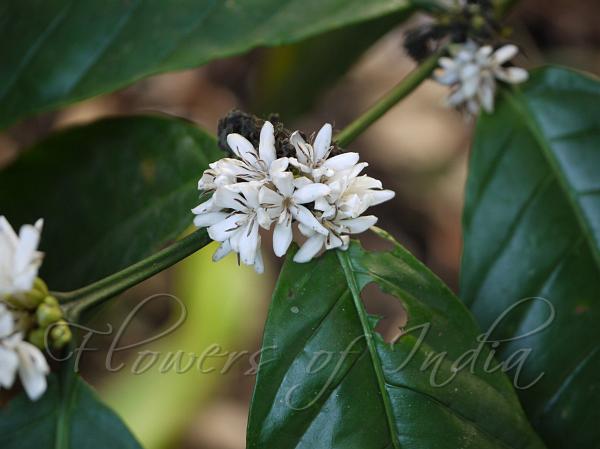|
| Robusta Coffee |
|

|

| File size | 280487 |
| Original date | 3/30/11 6:53 AM |
| Resolution | 2048 x 1536 |
| Flash | Flash did not fire, auto |
| Focal length | 45.0mm |
| Exposure time | 1/40s |
| Aperture | 2.8 |
| Focus Distance | |
| Metering Mode | Multi-segment |
| Camera make | Panasonic |
| Camera model | DMC-G1 |
| Sensor type | OneChipColorArea |
|
|
|
|
Photo: |
Botanical name: Coffea canephora Family: Rubiaceae (Coffee family)
Synonyms: Coffea robusta
Synonyms: Coffea robusta
Robusta Coffee grew indigenously in Western and Central Africa. It was not
recognized as a species of Coffea until the 19th century, about a hundred
years after Coffea arabica. The plant has a shallow root system and grows
as a robust tree or shrub up to about 10 m. It flowers irregularly, taking
about 10-11 months for cherries to ripen, producing oval shaped beans.
Leaf-stalk is 1-2 cm long, hairless. Leaves are drying thickly papery,
elliptic, elliptic-oblong, or occasionally ovate-oblong, 15-30 × 6-12 cm,
hairless on both surfaces, base wedge-shaped to broad, margins flat or
occasionally crisped-wavy, tip long-pointed with tip 1-1.8 cm. Secondary
nerves are 10-12 pairs. Inflorescences with cymes 1-3 in each leaf axil,
each cyme 3-6-flowered, stalkless to stalked with stalks up to 7 mm.
Flower-stalks are up to 2 mm. Sepal cup is hairless. Flowers white to
pink, funnel-shaped. Flower tube is 5-16 mm; petals 5-7, spatula-shaped to
narrowly elliptic, 8-19 mm, obtuse to rounded. Fruit is red, round,
1.0-1.2 cm across, smooth when dry, hairless. The robusta plant has a
greater crop yield than that of Coffea arabica. As it is less susceptible
to pests and disease, robusta needs much less herbicide and pesticide than
arabica.
| Identification credit: Dinesh Valke | Photographed at Kodagu Valley Resort, Madikeri, Karnataka. |
• Is this flower misidentified? If yes,